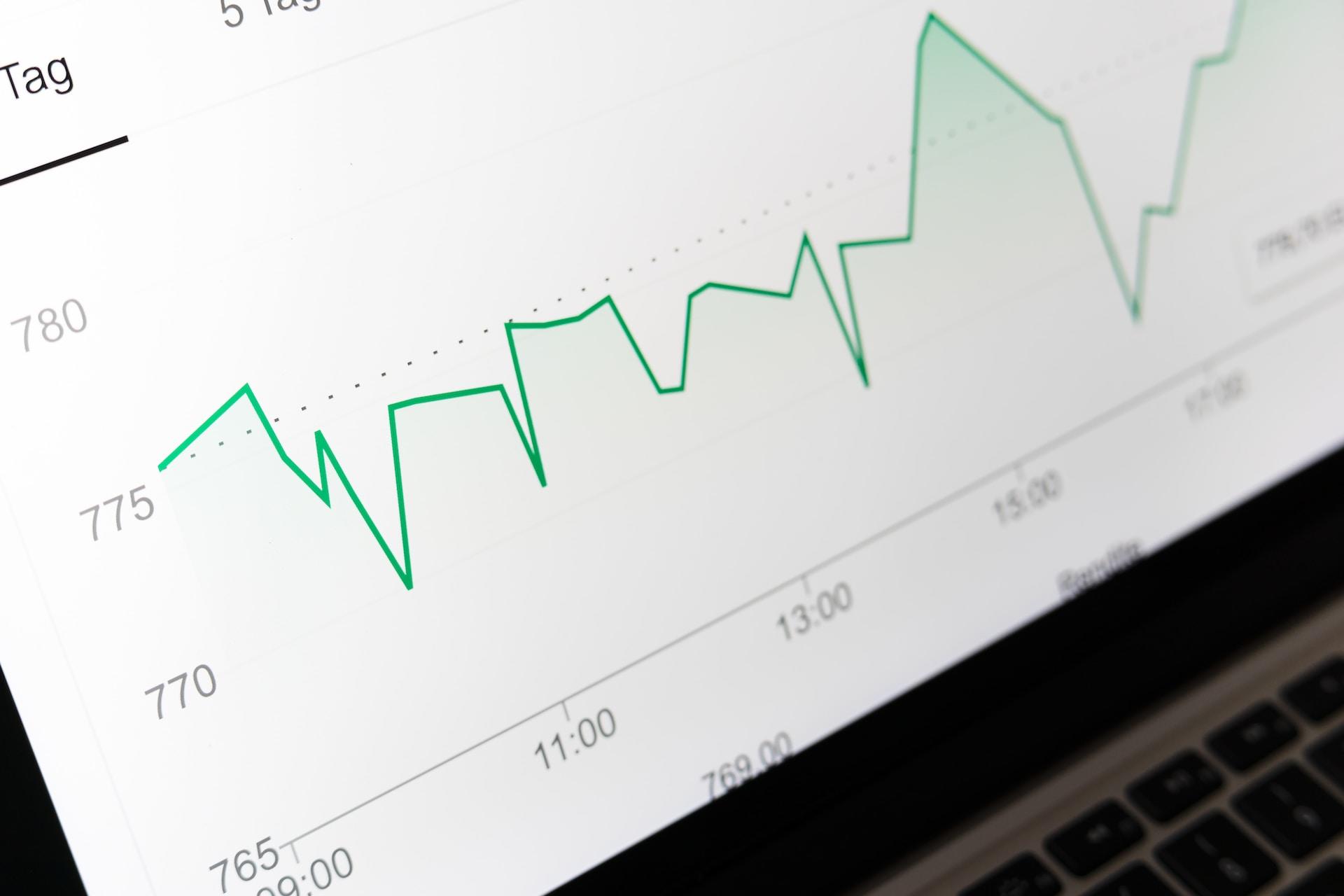The median is a kind of average used in mathematics and statistics. Essentially, it's the middle number in a set of values. While this sounds surprisingly simple, there's much more to the median than that.
In this article, we'll look at what averages are, how the median works, how to calculate, and how and when you should use it.

A Quick Introduction to Averages
It might help to think of averages as a mathematical way to understand the "gist" of data. To greatly oversimplify, if you wanted to know if it was a hot day, you could measure the temperature.
Very quickly, you may notice a flaw in this plan; the temperature changes throughout the day. In this instance, it's probably a good idea to take several measurements. If the temperature has changed a lot, it might be hard to work out whether it was a warm day or not.

If you took a measurement every hour, you'd have 24 measurements and still no idea of whether it was a nice day. To get an idea of whether it was or wasn't, you could take an average.
An average gives you the overall picture of the values and in mathematics and statistics, averages can be incredibly useful for analysing and comparing datasets. You can also use averages to make predictions or fill in gaps in data sets.
While students like to complain that they never use maths in their daily lives, you could easily use the average temperature for a given time of year to make a fairly good decision on what kind of clothing would be appropriate. Naturally, the weather forecast could help with this (which also uses averages), but if you were going on holiday for a few weeks and there was no forecast available, historical averages for your destination would help with planning.
Averages are used everywhere and across plenty of different industries, making them incredibly useful.
We have a few articles on different kinds of averages as part of our series on them, but today's focus is the median.
How Do You Calculate the Median?
Conceptually, the median is quite simple as it's just the middle number in a set of numbers. To calculate it, you just have to put all your values in numerical order and then select the middle one and you have the median.
Which value lies in the middle will depend on how many values you have so there are two ways to calculate the median depending on whether you have an odd or even number of values.
Calculating the Median with an Odd Number of Values
Say we had the highest temperatures for Perth this week (at the time of writing) and we wanted to find out the average temperature using the median. All we have to do is order the numbers.

- The highs for Perth this week are 29, 26, 30, 30, 29, 27, and 28.
- In order they are 26, 27, 28, 29, 29, 30, and 30.
- Since we have 7 values, the fourth value is the exact middle (as there are 3 values on either side of it). The median high temperature for Perth on this given week is 29.
For comparison, the mean (another type of average) of these numbers is 28.875, slightly lower than the median.
Calculating the Median with an Even Number of Values
If we were to have an even number of values, then we wouldn't have a middle value and instead, we'd have to take a different average of two values.
Let's say we add an extra day where the temperature is 22. Now we have 22, 29, 26, 30, 30, 29, 27, and 28.
In order, these values are: 22, 26, 27, 28, 29, 29, 30, and 30 and the fourth and fifth values lie in the middle (there are 3 values on either side of them).
The fourth and fifth values are 28 and 29. If both values were the same, it wouldn't really matter, but in this instance, we have to take the mean of both values.
With two values, the mean is simply just the halfway point between them, but to calculate the mean, you need to take the sum of the values and then divide by the number of values.
In this example, the sum of the values is 28 + 29 = 57. The number of values is just 2 so 57 divided by 2 is 28.5.
The mean of these numbers would be 27.625, about a degree lower than the median.
Do you want to learn more about maths? Find a private maths tutor Sydney on Superprof.

What Are the Advantages of Using the Median?
In our weather example, we've seen both the median and the mean used and they both gave us different averages.
Both of these are the average of those numbers and while “average” is often used to refer to the mean, the median is just as valid.
However, both averages come with pros and cons that you should be aware of as they can help you choose which kind of average to use in different situations with different datasets.
The median has several advantages including its resilience to outliers. Imagine that the thermometer was working incorrectly on one of those days and one day was reported as being 50 degrees during that week.

Now we have 29, 26, 30, 50, 29, 27, and 28. The mean would give us an average of 31.2857 whereas the median would still be 29.
By using the median, the effects of outliers or unusual or extreme values are somewhat mitigated and less affected by these numbers.
This is why you'll often see the median used for averages that concern financial information such as average salaries or property values. This is because there's a very small number of high-net-worth individuals whose salaries and properties would heavily skew the data.
While most Australians in salaries in the tens of thousands of dollars, a single millionaire or billionaire has a salary that's orders of magnitude greater than most other people. An average using the mean would be much higher because of these individuals' incredible wealth.
The same is true for property prices, which is why you'll find that most information reporting on average salaries, property prices, or other kinds of financial data prefers to use the median.
Perfect your maths knowledge with online maths tutoring on Superprof.
What Are the Disadvantages of Using the Median?
There are still disadvantages to using the median, though. In small datasets where the values aren't evenly distributed, the median can be greatly altered by adding or removing a single value.
Have a look at these two datasets:
- 10, 20, 30, 40, 50
- 10, 20, 30, 40, 50, 1,000
The median for the first dataset is 30 and for the second is 35. Despite the addition of a huge outlier, the median remains largely unaffected.
The mean of the first dataset is also 30 whereas the mean of the second dataset is 191.67. In this example, you'd say that the median is still the better average as it's not affected as much by the outlier.
If we add another 1,000 to the second dataset, we have 10, 20, 30, 40, 50, 1,000, 1,000 and our median is 40. However, when we add another 1,000 and our dataset becomes 10, 20, 30, 40, 50, 1,000, 1,000, 1,000, the median is now 525.
While the mean is often sensitive to extreme values, because of the small dataset, the mean is only 268.75 whilst the median has been much more affected by the inclusion of the larger values.
The median will be more affected by the addition or removal of values from a small dataset while the mean will usually be more affected by extreme values in a dataset.
When To Choose the Mean Instead of the Median?
While there's also the mode (another kind of average), you'll most likely have to choose whether you should use the mean or the median for datasets.
Knowing the advantages and disadvantages of both will certainly help, but here are a few tips as to when each is better suited.
If you have data without any extreme values, you can comfortably use the mean as you know there aren't any values that will affect it too badly. However, in the presence of extreme values, you'll likely want to mitigate their effect by using the median.
Since the median will only ever be one of the values in your dataset or the mean of two of them, you won't be able to get as precise a value for your average. If you're looking for precision and a detailed analysis of the numbers, go for the mean.
Generally, the mean is the go-to average used, which is why most people say “average” when they're actually referring to the mean. However, the median is a useful average when you know there are some outliers or extreme values that could skew the mean.
If you'd like to learn more about the median or any other kind of average, don't forget that there are plenty of qualified and experienced maths and statistics tutors on the Superprof website!
With many of the tutors offering the first session for free, you can try a few out before choosing the one that's right for you and start working with a tutor that's anything but average. Seek a maths methods tutor on Superprof today!















